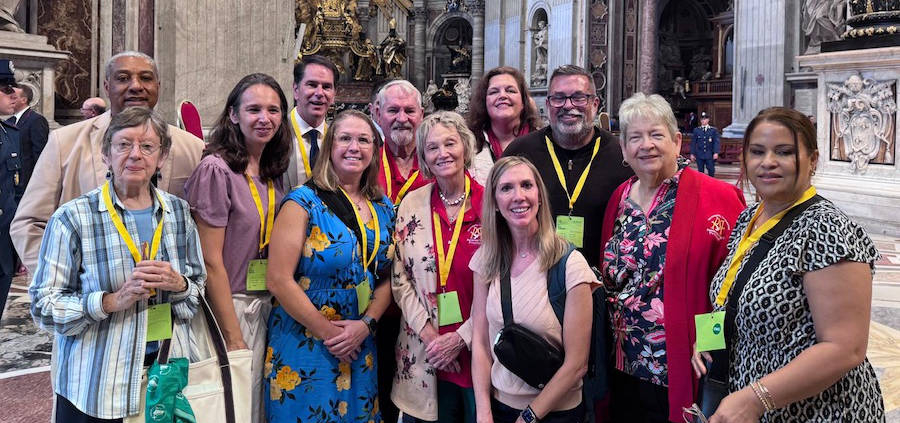A Pilgrim’s Adventure: Rome and Synodality, Day 5 by Patricia E. Clement, D.Min.
Greetings from Rome at the close of the Jubilee of Synodal Teams and Participatory Bodies!
My bags are packed for the return trip tomorrow, but the journey to implement the Final Document of the Synod on Synodality is only beginning. This week’s gathering marked the official launch of Pope Leo XIV’s three-year implementation phase. Unlike the conclusion of Vatican II, Popes Francis and Leo have insisted on creating a follow-up process of accountability. Every diocese around the world will now be required to report annually for the next three years on the concrete steps they are taking to immerse their parishes more deeply in synodality.
The US church is admittedly off to a slow start, but as the Holy Father reminded us, not every parish will move forward at the same pace. Pace and scale both matter. The first and most important step is to recognize that synodality is not a task with a deadline—it is a spiritual conversion to an ancient way of being church. The next essential step is formation at every level.
One of the most powerful voices for me this week was Cardinal Grzegorz Ryś, Archbishop of Łódź, Poland.
In his address to the Jubilee on October 24, “Synodality in the Face of Tensions in the Church,” Ryś examined three tensions revealed by synodality: a tension “between me/I and us/we,” or between what is “individualistic” and what is “described as community value”; a tension “between unity and uniformity”; and a tension “between preservation and mission.”
Synodality “calls us to relational conversion,” Ryś began, “to make us ready and able to walk together.”
The cardinal spoke of how human relationships, even in the work of evangelization, are often defined by a spirit of competitiveness rather than cooperation.
“We need formation to community, how to live together, how to believe together, how build the church together, and how to proclaim the gospel to the world together,” he said.
“The true aim of evangelization is not just a personal knowledge but only, as Paul says in the Letter to the Galatians, ‘faith working through love,’” he added.
The cardinal invoked the scene of the Last Supper, where Christ prayed for unity of his disciples—“that they may be one.” Christ calls his church to oneness in unity, not uniformity, he said.
“Those who try to homogenize the church do not bring to her the seeds of peace and unity, but of division. Uniformity is enforced by the spirit of exclusivism,” he said. “True unity means harmony in diversity.”
Uniformity, in other words, destroys community, and the absence of community has been identified as the greatest challenge in many of our dioceses. Uniformity is enforced by rejection, while unity is born of acceptance and diversity.
“Synodality invites us to an exchange of gifts,” the cardinal continued. “Synodality points to the beauty of variety, the community of diversities as our natural and divine space of life, discloses uniformity as a sin against God, against church, and against human beings.”
Cardinal Ryś’s words alone are enough for me to ponder for many days to come. Thankfully, Vatican News has archived them, and those interested can view his address here, beginning at the 1:49:25 mark.
And so, I leave you now to finish packing for the journey home—to share all the good news we have received. Thank you for accompanying me on this pilgrimage journey of faith! ♦
Dr. Patricia E. Clement, D.Min. is the president of the Pentecost Vigil Project, a non-profit online “One-Stop-Shop” of Synodality resources for American parishes.




Leave a Reply
Want to join the discussion?Feel free to contribute!